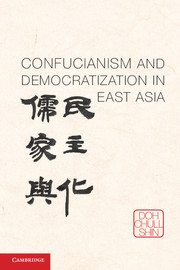Book contents
5 - Communitarianism and Civic Activism
from Part iii - Engaging in Civic Life
Published online by Cambridge University Press: 05 June 2012
Summary
In all human societies, there is a space in which people interact outside their families and apart from the state. This sphere in which people enter relationships and form associations of their own choosing is the realm of civil society (Alagappa 2004; Diamond 1999). Civil society has both a structural and a cultural dimension (Norris 2002; Putnam 1993). The informal groups and formal organizations that people enter into voluntarily represent the structural dimension of civil society, whereas the values and norms they share with other members of their formal and informal networks constitute civil society's cultural dimension. This chapter focuses on the structural dimension of civil society, exploring it in terms of interpersonal ties and associational activism. In the next chapter, I analyze civil society's cultural dimensions in terms of the shared norms of interpersonal trust and tolerance.
This chapter begins with a brief review of recent developments in the study of civil society. On the basis of this review, I explicate the Confucian notion of civic life and contrast it with the Western liberal model of civic life. I then examine whether the contemporary publics of Confucian Asia remain attached to the classical Confucian model or have embraced the Western liberal model. Next, I estimate the extent to which residents of Confucian Asia join in informal groups and participate in formal associations of various types. Finally, I determine how attachment to Confucian civic traditions affects formal and informal associations independently of other known influences on associational activism.
- Type
- Chapter
- Information
- Confucianism and Democratization in East Asia , pp. 143 - 178Publisher: Cambridge University PressPrint publication year: 2011

